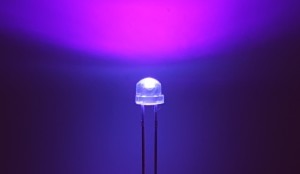 For the most part, our business focuses on the impact that LED retrofitting can have on commercial industry. Cost savings, reduced energy consumption, smart features, eco-consciousness and longer life cycles can make LEDs a vital addition to facilities throughout [city].
For the most part, our business focuses on the impact that LED retrofitting can have on commercial industry. Cost savings, reduced energy consumption, smart features, eco-consciousness and longer life cycles can make LEDs a vital addition to facilities throughout [city].
But LEDs have more to give than just light and lower energy bills. They are capable of changing the world. Once you understand the impact that LEDs could have, it won’t be surprising that the creators of the technology were awarded a Nobel Prize in Physics.
Lower Energy Consumption Creates More Options
One of the fundamental benefits of LED lights is that they require much less energy than traditional bulbs. The ability to operate with limited energy resources mean that smaller power sources can keep them running. The Nobel Committee recognized that this opens the door for less developed parts of the world to have access to consistent sources of light. Countries no longer have to choose between building massive power plants or remaining mostly in the dark. Smaller energy conductors, like solar panels, can be used instead to power these alternatives that require much less energy while still providing access to 21st century resources.
Turning Light Into Clean Water
Some of the most valuable possibilities to come from LED solutions actually have nothing to do with light that helps you see.
Access to clean water is a global problem, and according to UN Water, more than 783 million people in the world are without clean water to drink. So how do lightbulbs help with that? The same technology that gives you beautiful television picture and bright lights that last decades can also be used in a different capacity to clean water. Ultraviolet LEDs create light similar to the UV Rays that your sunscreen is supposed to protect you from, and, similar to the light that causes sunburns, it cannot be seen by the human eye.
When generally discussing problem UVs, people worry about the UVA and UVB rays. UVC lights also exist, but these rays don’t reach far enough to affect humans. When they are somehow harnessed, however, they can destroy dangerous bacteria, viruses and more. UVC light disables these germs by rendering them unable to continue to multiply, and if they can’t multiply, they can’t create illness and infection. LED Ultraviolet lights are able to disinfect water using these UVC rays.
While UV technology to disinfect water has been used for a while, the ability to harness LEDs to do the same reduces the amount of energy necessary to do it. This means that, like LED fixtures to provide light to marginalized global communities, lower power energy sources that don’t require access to a power grid can be used to clean water as well.
Global and Local Impact
It’s important for the [city] community to understand that these same technologies that are changing local energy bills are actually changing the world. LEDs are more than just light, and the expanding usage of these technologies throughout the Western World is opening up opportunities for better, healthier lives elsewhere. From cutting reliance on the energy grid to bringing light to low income communities and, most importantly, providing options for clean water to the millions who are without, LEDs are able to do more than save money. They have the capacity to save lives.

![The 4 Absolute Best Smart LED Bulbs You Should Buy Today [city]](https://eepros.com/wp-content/uploads/2017/10/pexels-photo-276724-300x169.jpeg)
![The Top 4 Reasons Why Your Office Needs Smart Lighting [city]](https://eepros.com/wp-content/uploads/2019/03/computer-2982270_640-300x195.jpg)
![Should You Get Smart LED Light Bulbs? [city]](https://8blocks.s3.amazonaws.com/eepros/blog-images/2016/04/bathroom-728740_640-1-300x200.jpg)
![LED Light Bulbs, Incandescent Lamps, and Halogens — Which One Is Best? [city]](https://8blocks.s3.amazonaws.com/eepros/blog-images/2016/10/hotel-389256_640-300x200.jpg)